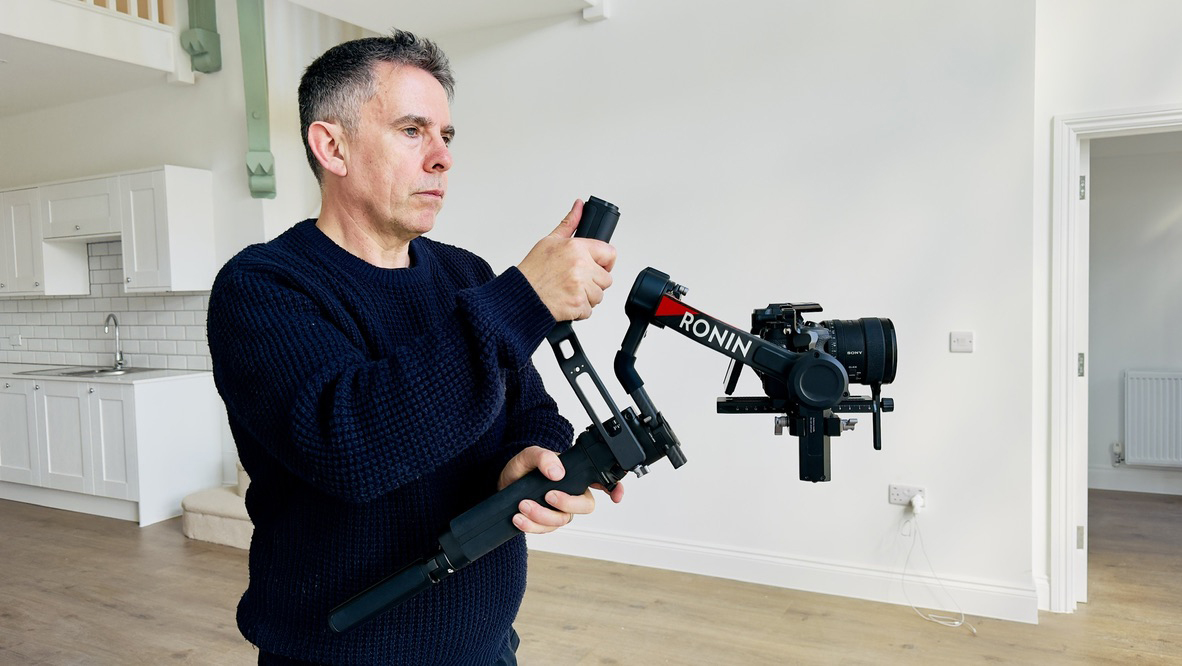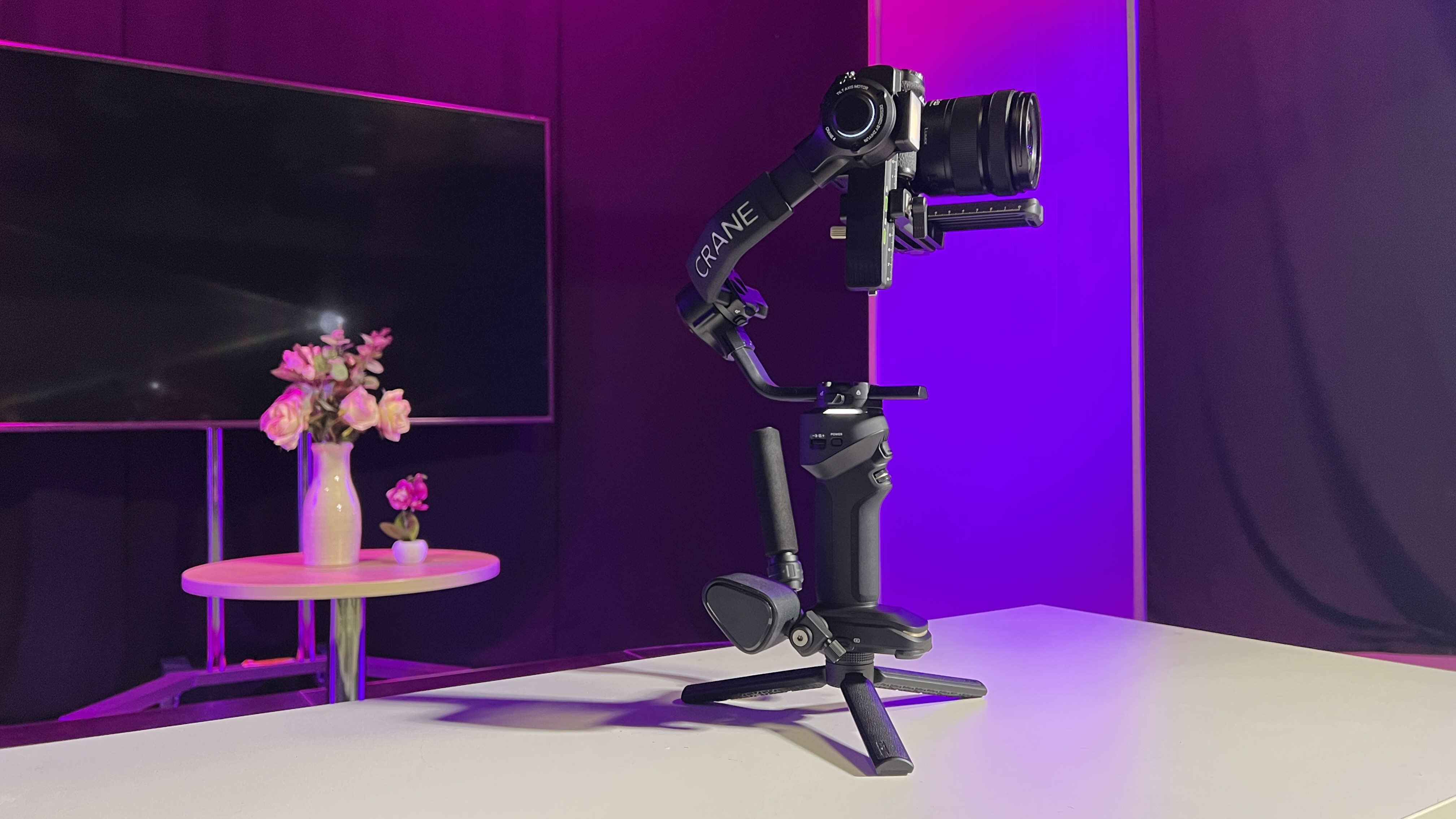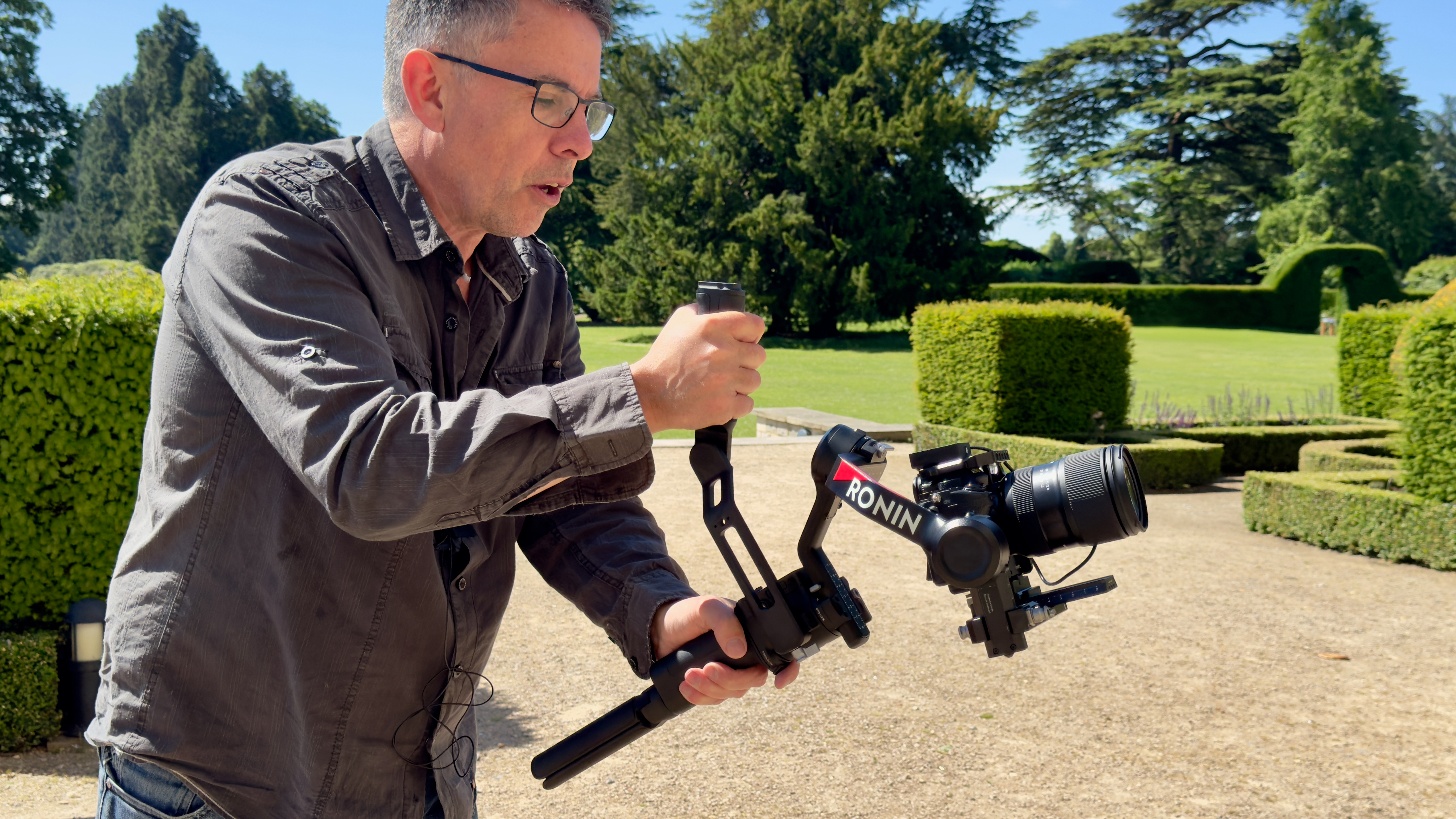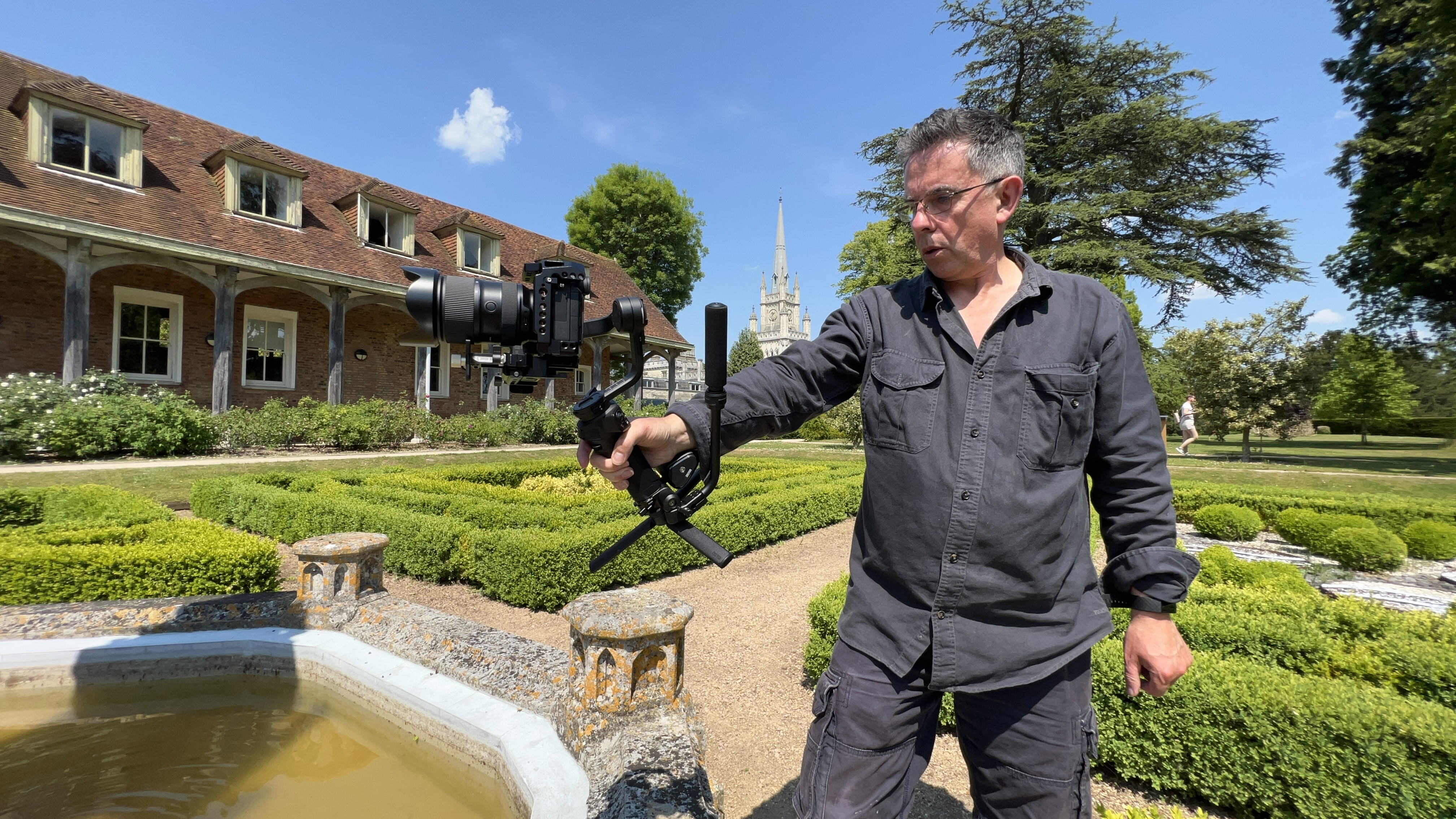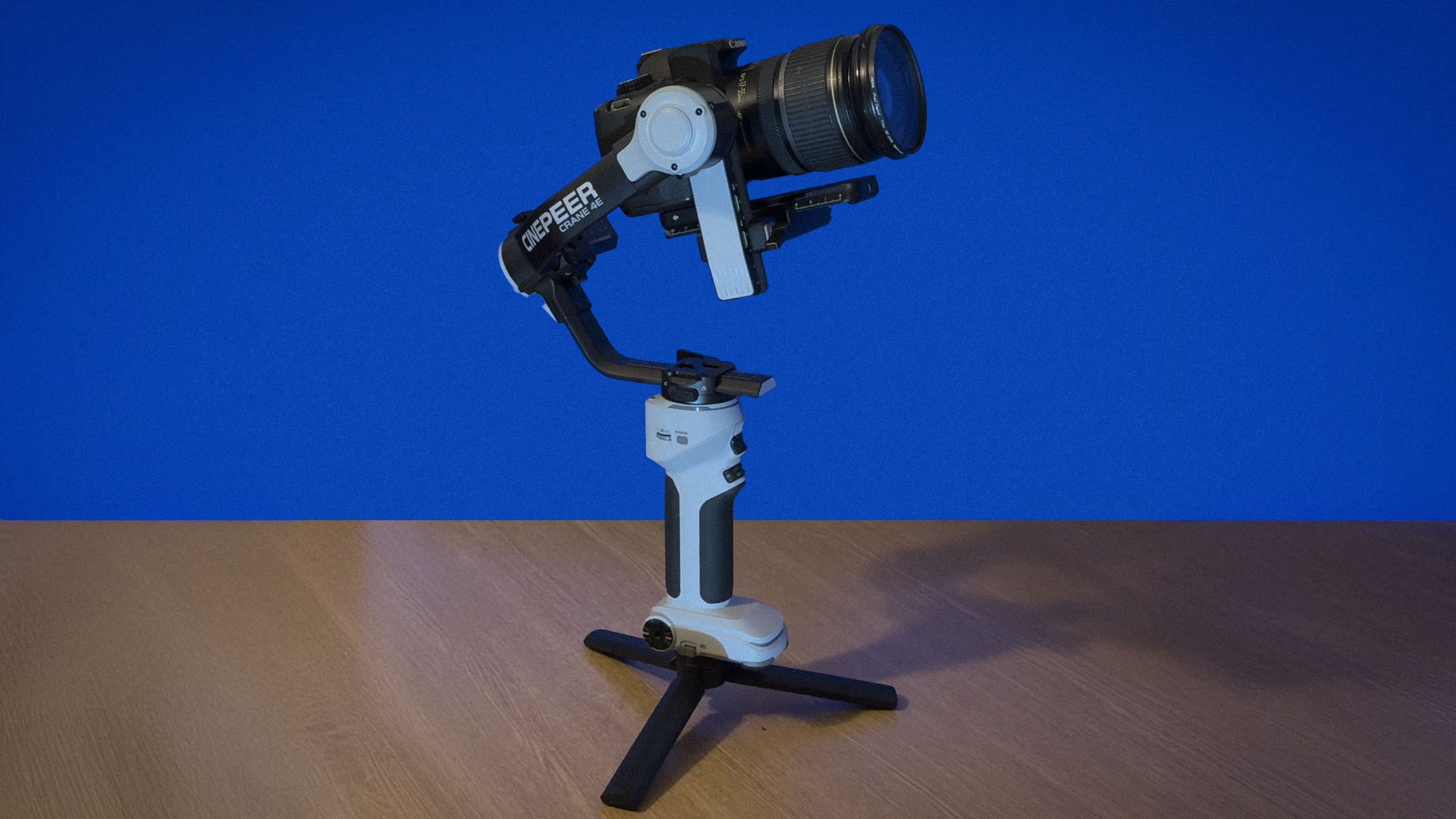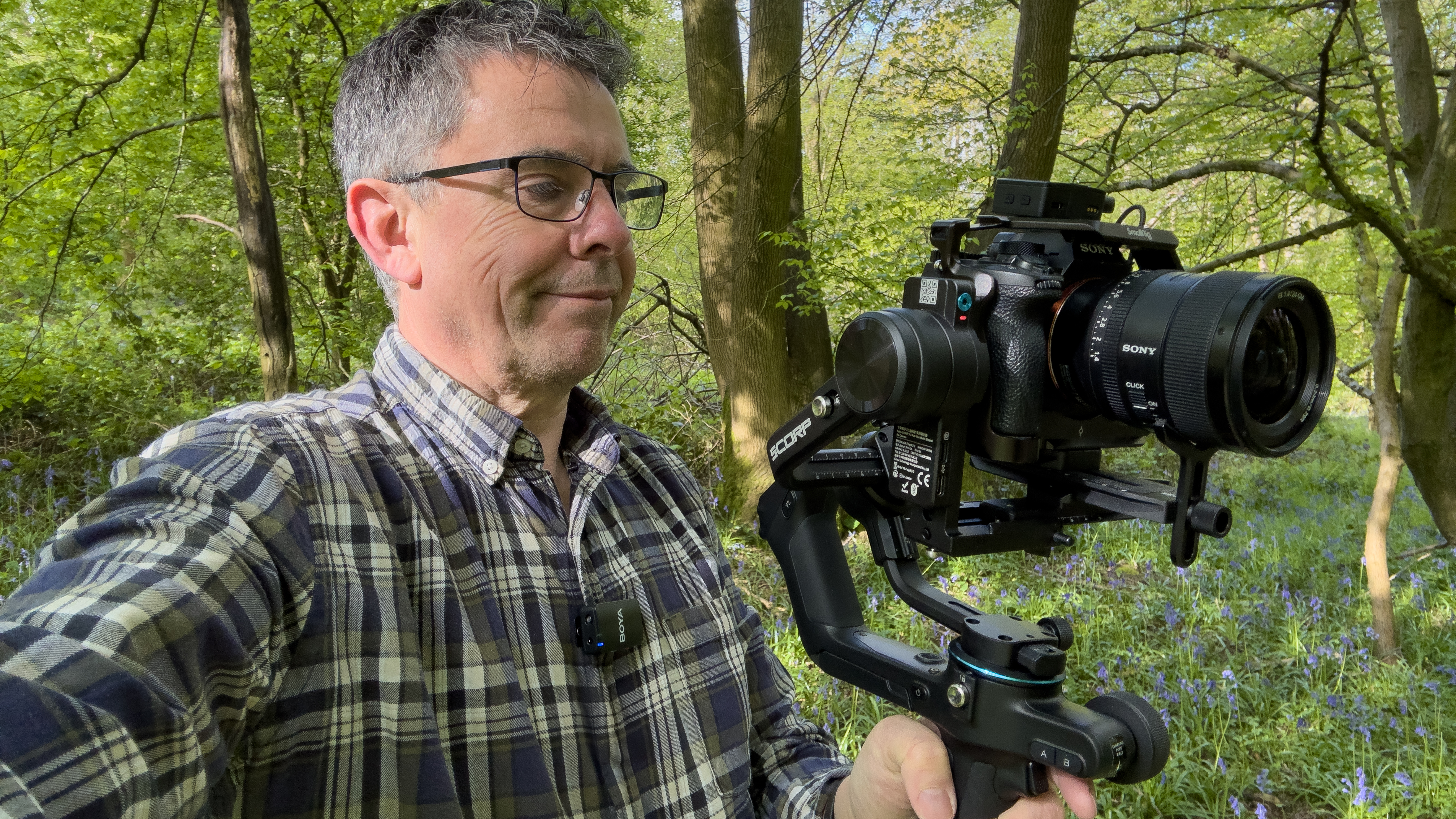The best gimbals for mirrorless and DSLR cameras in 2025
The best DSLR and mirrorless camera gimbals can smooth out your footage and camera movements in ways that IBIS can't
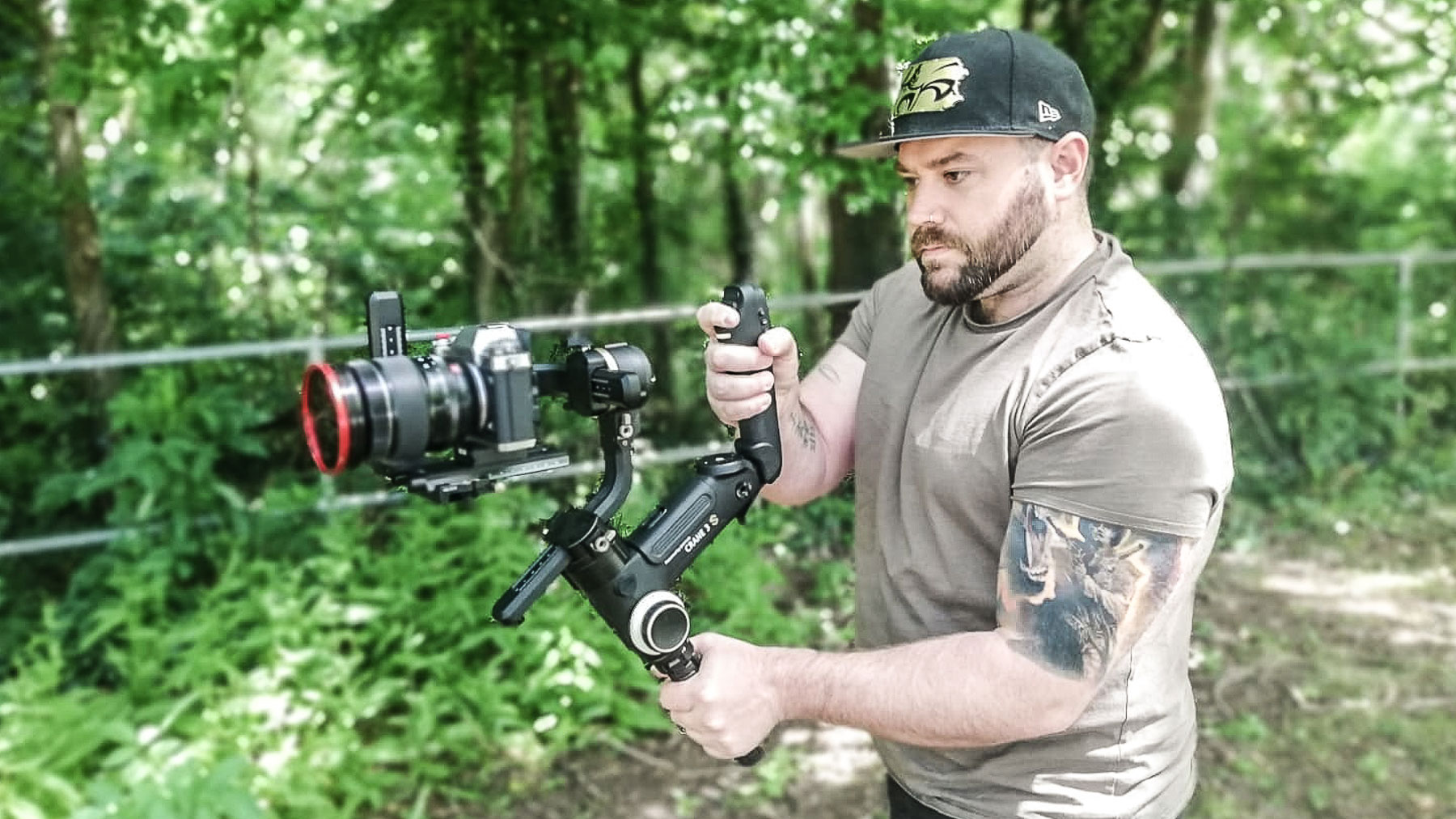
The best gimbals for mirrorless and DSLR cameras are the only reliable way to produce super-smooth camera movements in your videos. Built-in stabilization systems can be useful, but they don't compare to the level of smoothness offered by a dedicated physical gimbal. For any serious videographer, it's an essential investment.
Gimbals are especially effective for 'run and gun' style filming, where both you and the camera are physically following your subject. Here, I've listed the best gimbals that the DCW team have tested on our own video projects, with different options for different applications, use cases and budgets.
This guide is for heavier-duty gimbals capable of supporting the best DSLRs, the best mirrorless cameras, and, in some cases, the best cinema cameras. If you're using a lightweight setup, you may want to instead consider our separate guide to the best smartphone gimbals.

Gareth is the Reviews Editor at Digital Camera World, and the person in charge of approving all the latest camera-related tech. With years of experience as a photographer and videographer, shooting for some household names, he has learned a thing or two about working with cameras and the photography industry. Outside of this, expect to find him cycling around London, or deep in a Netflix binge.
The Quick List
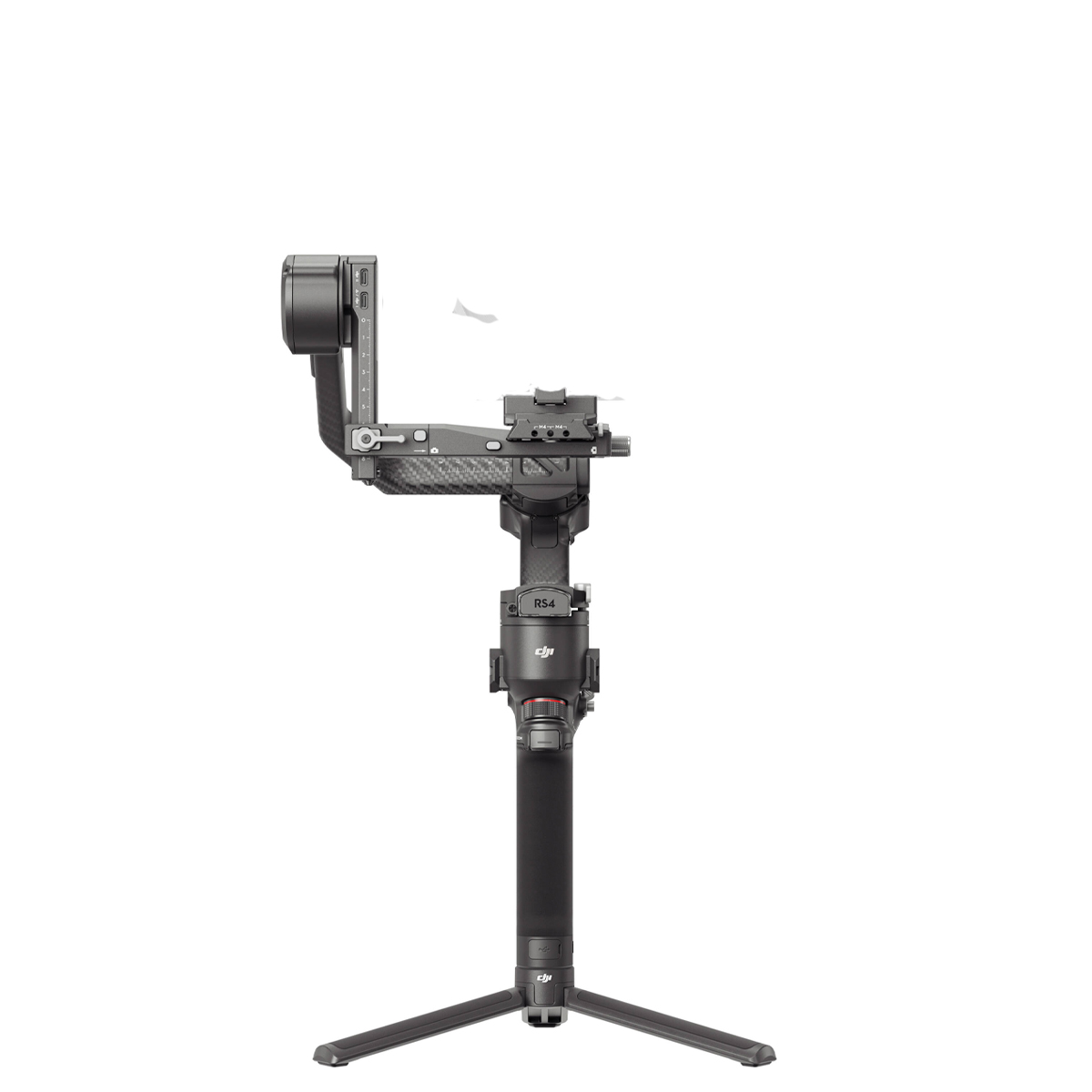
This gimbal goes the extra yard by working with loads of up to 4.5kg, with plenty of controls to help you achieve a comfortable balance.

This pro-grade gimbal can handle DSLRs just fine, while motor lights on each axis help balance your camera setup quickly.
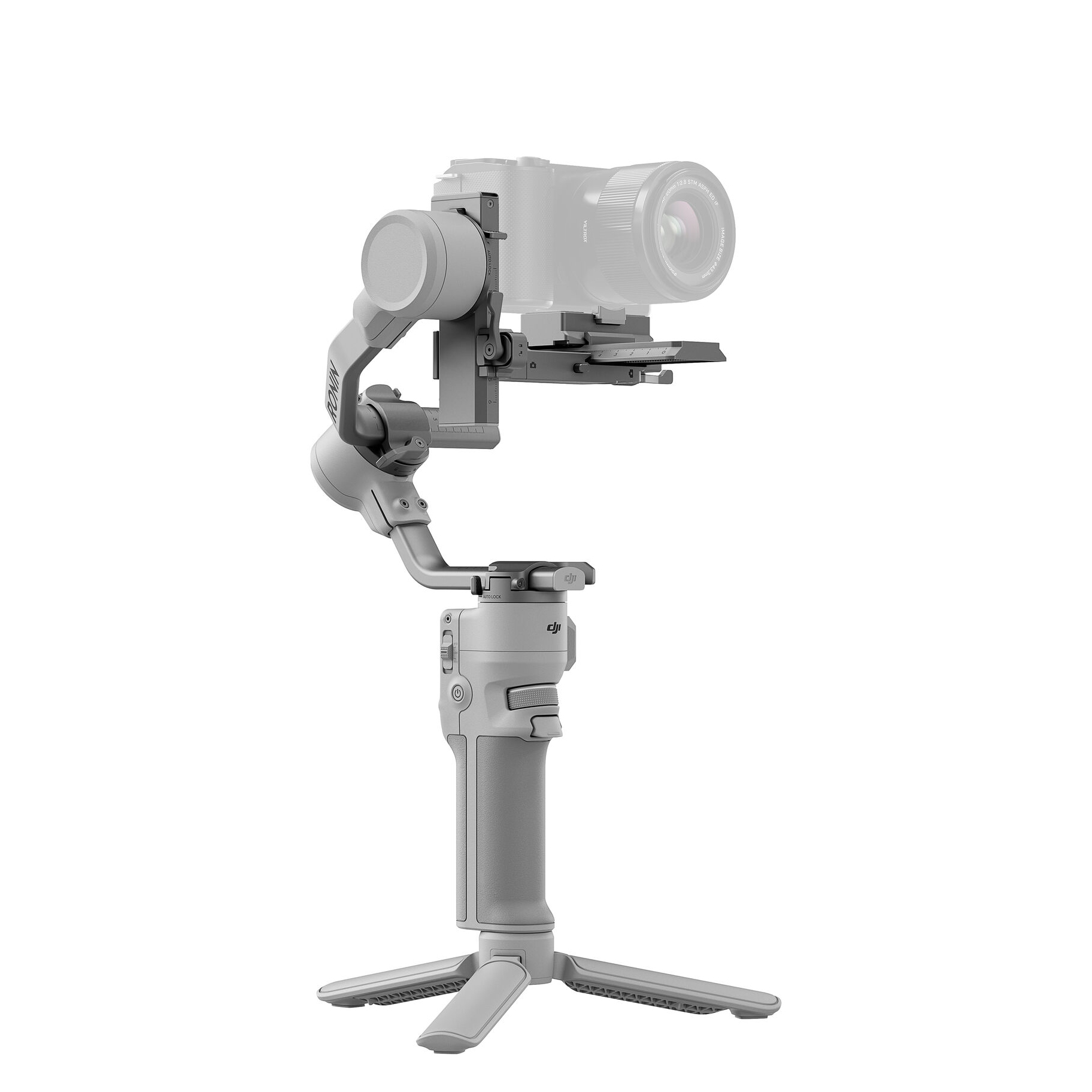
If you want a gimbal that can handle a small camera and a phone, then the DJI RS 4 Mini is the smallest gimbal in DJI's lineup but with DJI's stabilization smarts.
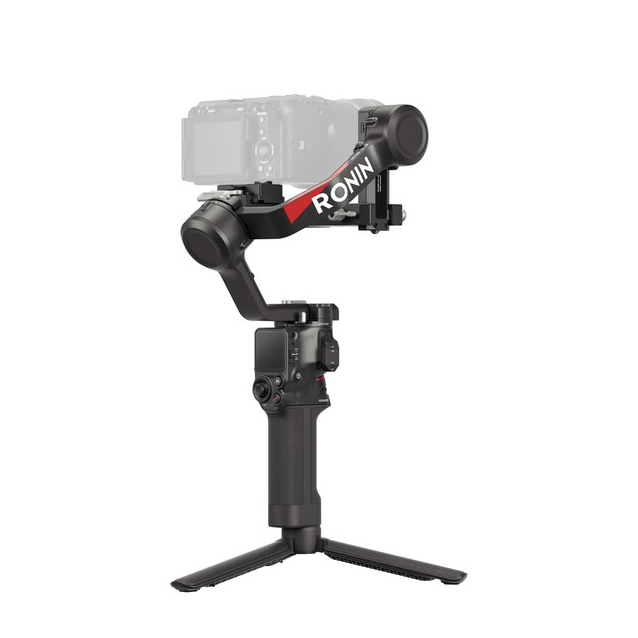
DJI RS 4 gimbal effortlessly handles up to 3kg payload, with easy balancing and automatic arm locking, but may encounter roll arm slipping during long shoots.
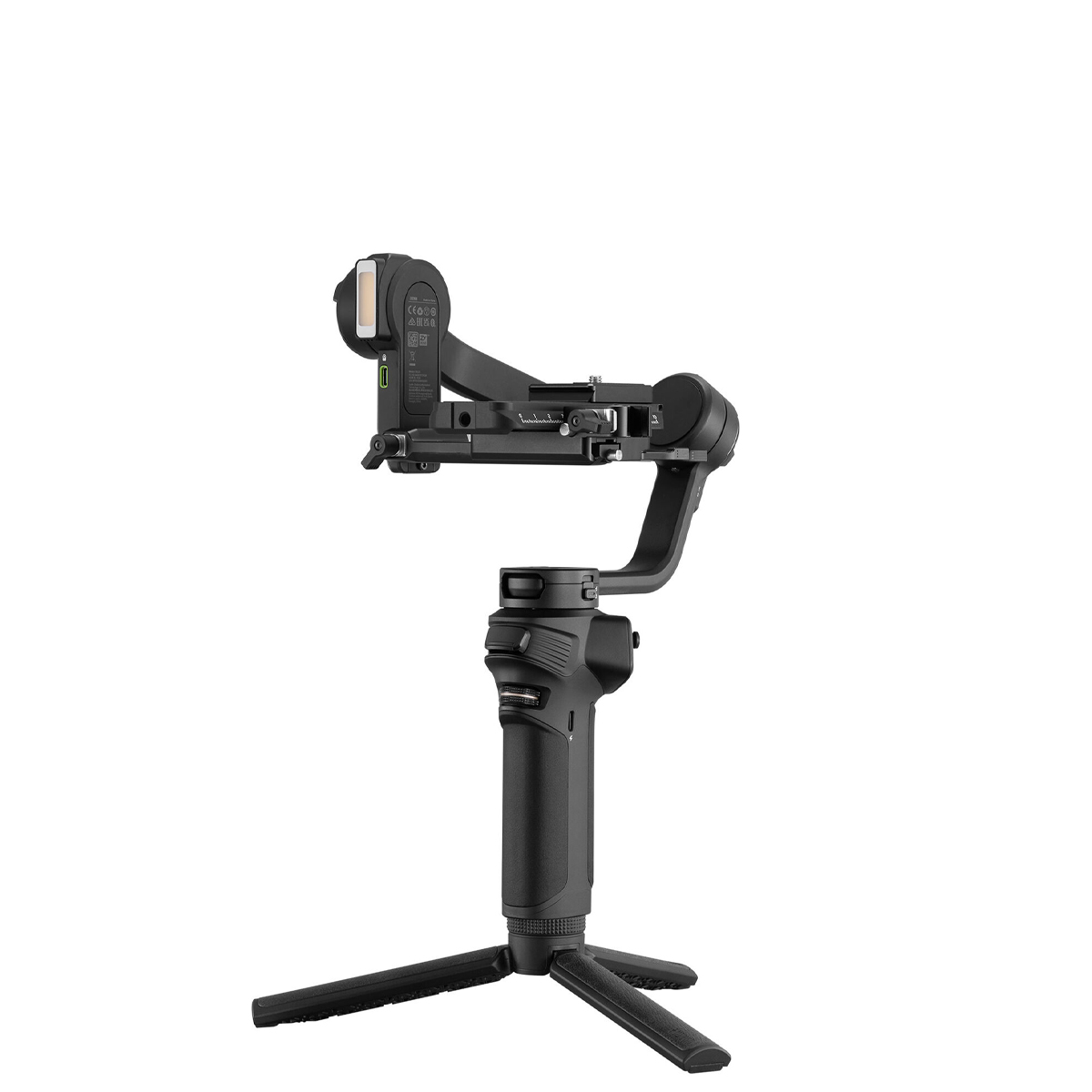
An adjustable sling-grip and ergonomic wrist support your arm during long shoots, and you can create a two-handed grip for heavier setups.

If you’re using a DSLR or an equivalent-sized mirrorless camera, the Zhiyun Cinepeer Crane 4E will take the weight without breaking the bank.
See more products
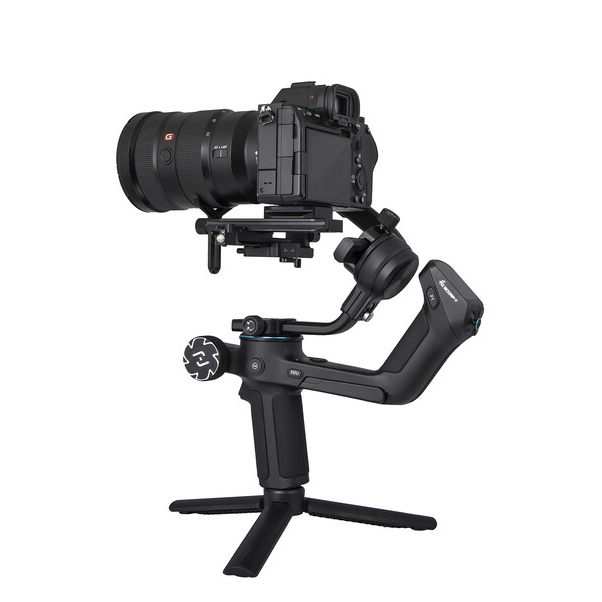
The Scorp 2 provides an affordable way to get your mirrorless camera to make professional moves. The built-in AI sensor makes it stand out from the gimbal crowd!
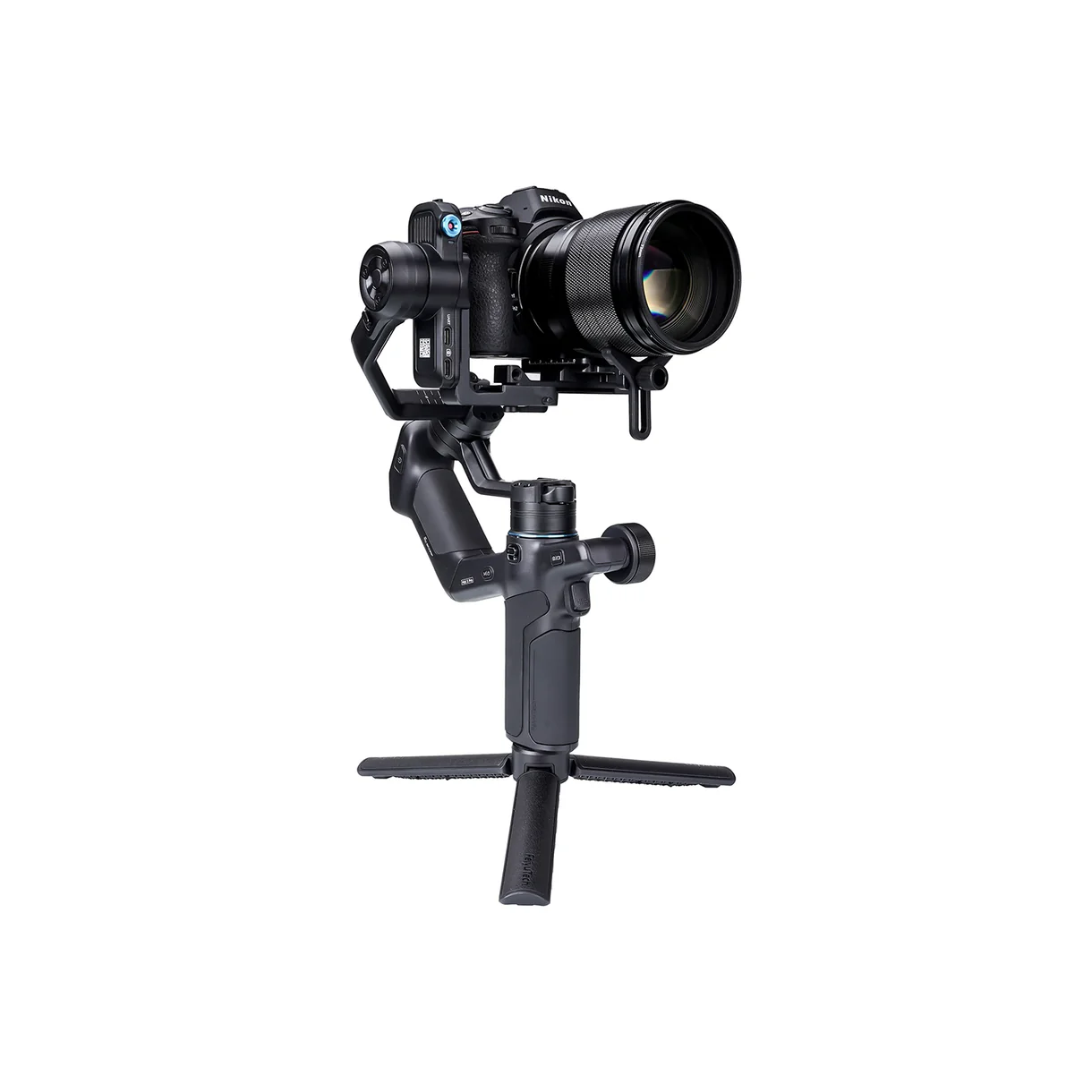
The Feiyu SCORP Mini 3 Pro is a lightweight, feature-rich gimbal offering smooth stabilization, AI tracking, and intuitive touchscreen control.
Best DSLR and mirrorless camera gimbals
Why you can trust Digital Camera World
Best gimbal for heavy loads
Specifications
Reasons to buy
Reasons to avoid
✅You want high payload capacity, as the RS 4 Pro supports up to 4.5 kg camera and lens setups.
✅You want long operation time, with the BG70 grip offering up to 29 hours of runtime and power-bank ability.
❌You want to avoid excessive cost, as adding LiDAR, motors and extras quickly makes it very expensive.
❌You want bigger upgrades, yet the RS 4 Pro only offers incremental improvements over the RS 3 Pro.
alancing a heavy DSLR and lens payload has always been one of the trickiest and most time-consuming parts of using a stabilizer, but DJI’s RS 4 Pro introduces a few thoughtful innovations that take much of the frustration out of the process.
At the heart of this is a new precision-control knob on the tilt axis, which allows you to make micro-adjustments with far greater accuracy than the usual trial-and-error sliding. This is particularly valuable when you’re working with large telephoto zooms or long primes, where even the slightest imbalance can throw the whole rig off.
Adding to that, DJI has coated the tilt axis with Teflon, reducing friction so the camera glides more smoothly into position as you fine-tune the setup. It’s a small detail that makes a big difference when you’re wrestling with a top-heavy DSLR and lens combination. The roll axis has also been re-engineered with dual sliding bearings, giving you a more controlled, comfortable adjustment as you work to get your payload sitting just right.
What really sets the RS 4 Pro apart, though, is its approach to axis locking. Many competing gimbals still rely on manual locks, which can be easy to forget and lead to annoying error warnings when you power up. DJI has streamlined this by introducing automatic locking and unlocking across all three axes, saving you time and hassle while also protecting the motors from unnecessary strain.
The result is a gimbal that doesn’t just carry heavy payloads but actively makes the balancing process less of a chore, getting you shooting faster and with far less trial and error.
Read more: DJI RS 4 Pro review
Best gimbal for grip
Specifications
Reasons to buy
Reasons to avoid
✅You want strong motor performance and good payload headroom, since the Crane 4 supports up to ~4 kg in real use while weighing about 1.7 kg itself.
✅You want ergonomic comfort over time, as the Crane 4 offers a sling grip and adjustable wrist rest for better handling and reduced fatigue.
❌You want to avoid being stuck with a non-swappable battery, since the Crane 4 has a built-in battery (no hot-swap)
❌You want to avoid slow firmware updates, since upgrading via the app can be sluggish - many users prefer using the desktop tool.
If you’re looking for a gimbal that can take on a larger camera setup with ease, whether you’re running a full-frame DSLR, a hefty mirrorless body, or even a compact cine rig, the Zhiyun Crane 4 is built to deliver. It’s a professional-grade stabilizer designed with versatility in mind, offering the strength to handle heavier payloads without sacrificing ease of use.
The design itself is polished and practical, with ergonomic touches that really make a difference during long shoots. The included sling grip and wrist rest are particularly welcome, helping to redistribute the weight of your setup and reduce fatigue when you’re carrying a large lens or a rigged-out camera for extended periods. These little refinements mean that even when you’re shooting all day, you’re far less likely to feel the strain.
One of the smartest features is the set of motor warning lights integrated into each of the three axes. These indicators take the guesswork out of balancing – instead of fiddling endlessly or relying on trial and error, the Crane 4 gives you immediate feedback on whether your camera is correctly balanced. That’s a real time-saver, especially when switching between different bodies and lenses on a shoot.
Zhiyun has also put thought into connectivity and control. The companion smartphone app gives you a wide range of remote control options, from adjusting settings to triggering movements, making it possible to manage the gimbal without needing to touch it directly. This opens the door for more creative shots, particularly when you’re working solo and need extra flexibility in how you operate your rig.
The result is a gimbal that feels both robust and refined, capable of tackling heavy-duty setups while giving you the comfort and control you need for professional filmmaking.
Read more: Zhiyun Crane 4 review
Best for a light payload
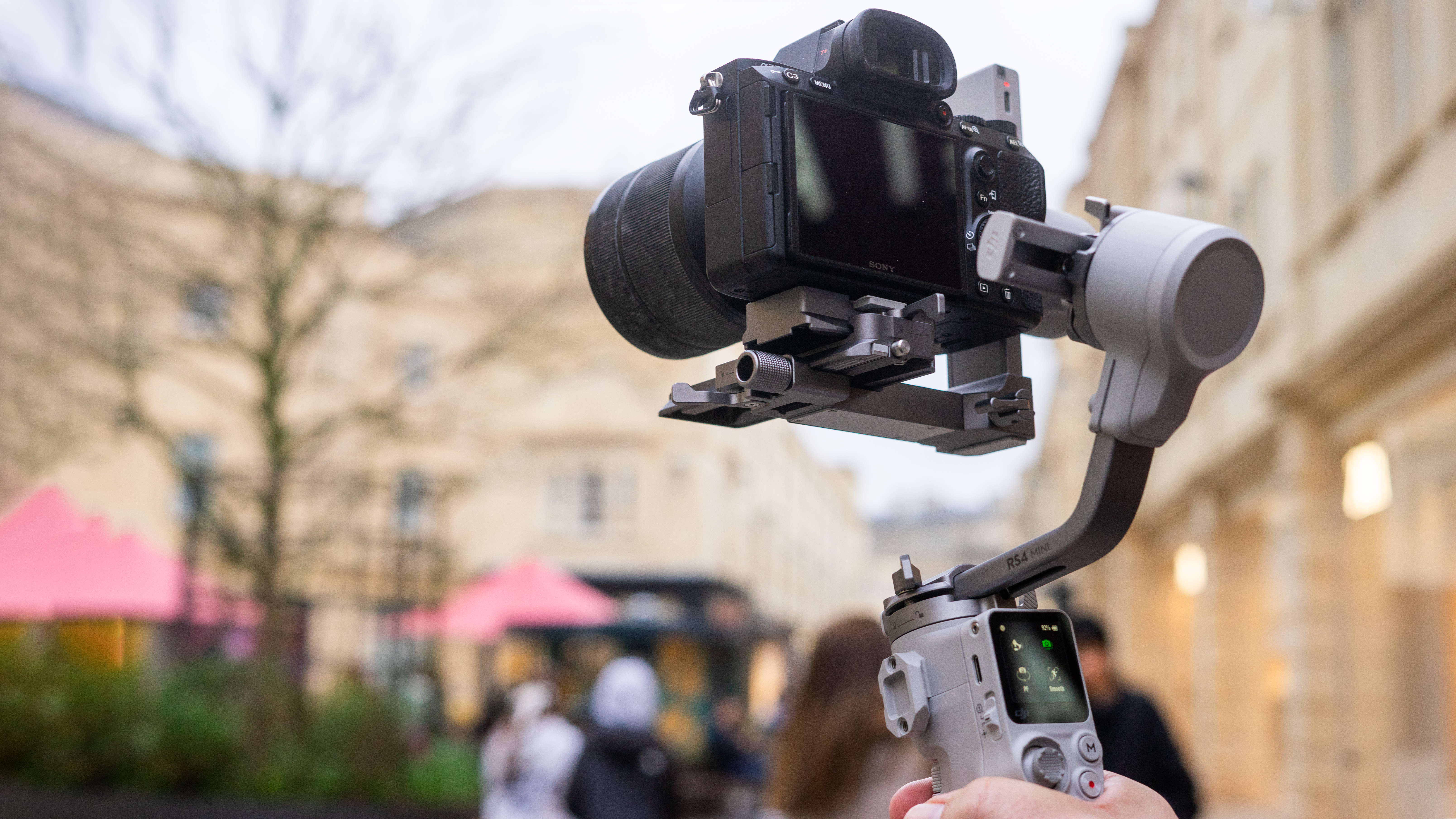
Specifications
Reasons to buy
Reasons to avoid
✅You want auto-axis locks to speed setup and lens changes
✅You want optional intelligent tracking, via a bolt-on module (for subject tracking).
❌You want to avoid pushing it with heavy cinema gear, because above ~1.8-2 kg the motors run hotter and performance drops.
❌You want to avoid steep setup complexity, since balancing and dialing in the axes still require care and have a learning curve.
Don’t let the “Mini” badge fool you – DJI’s shrunk-down Ronin is every inch a pro-grade stabiliser, yet its featherweight 890g frame won’t leave your arms aching after a day’s shooting. Despite its compact build, a revised 2kg payload comfortably carries most mirrorless bodies with a fast prime attached, and even some lighter zoom setups, making it a serious contender for professional work.
The Teflon-coated arms glide smoothly when adjusting balance, while powered auto-locks – inherited from the flagship RS 4 Pro – keep everything secure when you’re on the move, meaning no more flapping arms when you sprint to reset your angle.
Control is equally refined. The bright 1.4-inch touchscreen puts key functions at your fingertips, but DJI sensibly flanks it with physical switches for mode changes, letting you jump between Follow, Pan or FPV without fumbling through menus mid-shoot. Balancing still demands a few minutes of patience, but once dialled in, the RS 4 Mini rewards you with the kind of butter-smooth cinematic moves that used to require stabilisers twice its size and weight.
Battery life stretches to around 13 hours on a charge, enough for a full day’s shoot, and the addition of USB-C fast charging ensures downtime is kept to a minimum – ideal if you’re bouncing between locations. Throw in DJI’s optional AI Tracking module, and you’ve essentially hired a virtual focus-puller that keeps your subject nailed without a crew.
All told, the RS 4 Mini is the most travel-friendly route to cinema-grade stabilisation in 2025. It’s a gimbal that feels purpose-built for solo shooters who need to move quickly between weddings, social content, and fast-paced documentary work – offering professional stability in a package that slips into a backpack.
Read the full DJI RS 4 Mini review
Best gimbal for mirrorless cameras
4. DJI RS 4
Our expert review:
Specifications
Reasons to buy
Reasons to avoid
✅You want good payload for mirrorless rigs, as the RS 4 supports ~3 kg of camera + lens
✅You want physical mode buttons / dials, making mode switching more intuitive than menu dives.
❌You want to avoid high cost, as the RS 4 is expensive for what it offers relative to other gimbals.
❌ You want simpler gear, but the RS 4 still has a learning curve for balancing, calibration, and tuning.
If you own a mirrorless camera and a selection of lenses, you’ll want the confidence that your gimbal can pan, tilt and roll even a heavier payload without complaint. The DJI RS 4 is more than up to the job, supporting setups up to 3kg. In our testing we paired it with a Sony A7 III and Tamron 28-75mm f/2.8 Di III lens, weighing in at around 1.4kg, and the RS 4 handled it with ease, leaving plenty of headroom for larger zooms or accessories.
Balancing can often be the most tedious part of setting up a gimbal, with some models requiring brute force to slide each axis arm into place. DJI has made this process far smoother. All three alloy axis arms on the RS 4 are treated with a Teflon coating, which allows them to glide more freely when adjusting. On top of that, the tilt axis features a precision fine-tuning knob, letting you nudge the camera into a perfectly balanced position rather than overshooting back and forth. It’s a small but very welcome refinement that makes balancing less of a chore.
A common stumbling block with many gimbals is forgetting to unlock all three axes before powering on, which can cause the stabiliser to shake violently or power down. DJI has solved this elegantly with its 2nd generation automatic locking system. With a single switch, all three arms are either locked securely for transport or unlocked for shooting, removing a step that frequently frustrates users. It’s a simple design improvement that makes a real-world difference.
During a longer shoot we did notice the roll arm gradually slipping out of position, which caused the setup to become unbalanced. Thankfully, this was a quick fix – just a minor re-adjustment brought it back into line – but it’s something to be aware of if you’re running heavier rigs over extended periods.
Overall, the RS 4 strikes an excellent balance between payload capacity, ease of balancing, and thoughtful refinements that save time and reduce frustration. For mirrorless shooters stepping into heavier glass or more professional workflows, it’s a stabiliser that feels ready for the challenge.
See our full DJI RS 4 Combo review for more details
Best gimbal for comfort
Specifications
Reasons to buy
Reasons to avoid
✅You want solid stabilization performance, as it smooths walking and even more aggressive motion quite effectively.
✅You want app and Bluetooth control, enabling remote control, mode changes, and fine tuning via ZY Play.
❌You want longer battery life, but the Weebill 3S offers only ~11.5 hours - significantly less than the ~21 hours of the Weebill 3.
❌You want seamless portrait/landscape switching, but switching modes may require rebalancing or re-clamping in some scenarios.
Weighing in at just over a kilo, the Zhiyun Weebill 3S feels reassuringly lightweight yet still robust enough for serious work. Its compact frame makes it easy to travel with, but what really stands out are the thoughtful handling options.
The rotating sling grip is particularly clever: you can swing it closer to the main grip handle, creating a secure and comfortable two-handed hold. This not only takes the strain out of shooting longer sequences but also gives you extra stability when handling heavier camera and lens combinations.
In testing, we paired the Weebill 3S with a Sony A7 III and a Canon 650D DSLR, both equipped with standard zooms, and it breezed through with no signs of stress on the motors. The gimbal felt balanced and confident throughout, even when tilting and panning more dynamically. The resulting footage was beautifully smooth, with that cinematic glide you’d expect from far bulkier stabilisers.
Zhiyun’s engineering here manages to strike a sweet spot: portable enough for run-and-gun creators, but strong and flexible enough for more demanding setups. It’s a gimbal that encourages experimentation, rewarding you with steady, professional-looking results whether you’re filming a short handheld sequence or a more involved shoot.
Read more: Zhiyun Weebill 3S review
Best gimbal for DSLRs
Specifications
Reasons to buy
Reasons to avoid
✅You want native portrait (vertical) shooting, via its integrated quick-release structure that lets you switch orientation without added gear.
✅You want long battery life, with up to ~12 hours of use and about 2 hours of USB-C fast charging.
❌You want balance indicator lights, but the 4E lacks motor balance LEDs (unlike the Crane 4).
❌You want full torque under overloading, but in some tests, pushing a payload over ~3.3 kg showed strain on the gimbal.
While this gimbal isn’t too hard on the wallet, it still has the muscle to hold DSLR-sized payloads with confidence. That makes it a solid choice if you’re shooting with a popular video-focused DSLR like the Canon EOS 90D, or an equivalently sized mirrorless camera such as the Sony A7 series.
The Zhiyun Cinepeer Crane 4E is, in essence, a pared-back version of the more premium Crane 4. It trims away a few non-essential extras like balance indicator lights and the built-in fill light, but in doing so manages to hit a far more accessible price point without losing the core stabilisation performance.
A quick-release plate makes mounting and dismounting your camera refreshingly straightforward, while also letting you flip the camera into a vertical position in seconds – perfect for portrait-oriented footage and social-first content that’s increasingly in demand.
The Crane 4E also comes packaged with its own mini tripod, giving you the option of setting it down for hands-free operation. With the gimbal secured in place, you can use the joystick to execute smooth pans, tilts and sweeps, opening up more creative possibilities even when you’re working solo.
It’s not quite as feature-packed as its bigger sibling, but the Cinepeer Crane 4E offers excellent value for money and delivers reliable stabilisation that makes it a strong entry point for filmmakers who want pro-style footage without the premium price tag.
Read more: Zhiyun Cinepeer Crane 4E review
Best budget gimbal
Specifications
Reasons to buy
Reasons to avoid
✅You want built-in AI tracking, because the SCORP 2 has a dedicated camera for gesture and object tracking without needing external modules.
✅You want a dual-grip / briefcase style design, allowing underslung or low-angle shooting without adding extra handles
❌ You want perfect balance in all configurations, yet balancing a longer lens + accessories may be challenging or require extra support (lens bracket).
❌You want long continuous shooting when using AI tracking, but having the tracker active or accessories on may reduce the practical battery runtime.
If you shoot on a mirrorless camera system such as the Sony A7RV then you won’t need to pay a premium price for a heavy DSLR-lifting stabilizer such as the DJI RS 4 Pro. The Feiyu Scorp 2 can effortlessly carry a payload of up to 2.5 Kg (and our Sony A7RV and lens only weighed in at 1.5 Kg when we tested the Scorp 2.)
The Scorp 2 also has an ace up its sleeve in relation to tracking a subject. The DJI Ronin-SC requires a smartphone app to enable the gimbal to track your movements. The Scorp 2 features a built-in AI tracker that enables the gimbal to tilt and pan to follow your every move after you make an ‘OK’ gesture. When you’ve finished recording, stick your thumbs horizontally together to stop the AI tracking feature. This should be an attractive feature for YouTube self-shooters who want to add some camera moves to their ‘talking head’ performances.
As with most other gimbals in this guide, the Scorp 2 is supported by a smartphone app - in this instance the Feiyu Scorp app. This enables you to change shooting modes or calibrate the 3-axis motors from the comfort of your smartphone’s display (rather than fiddling with the gimbal’s smaller 1.3” OLED touchscreen.)
One fun feature of the app is the ability to sync it to your smartphone’s gyroscope so that you can pan and tilt the gimbal remotely via Bluetooth. This behaves just like the DJI Ronin App’s Force Mode when using it to control the RS 4 Pro.
Personally, I’d file this type of remote control under ‘gimmick’ as it’s hard to get smooth and steady pans and tilts when waving your smartphone about like Harry Potter with his wand.
Read more: FeiyuTech SCORP 2 review
Best for compacts
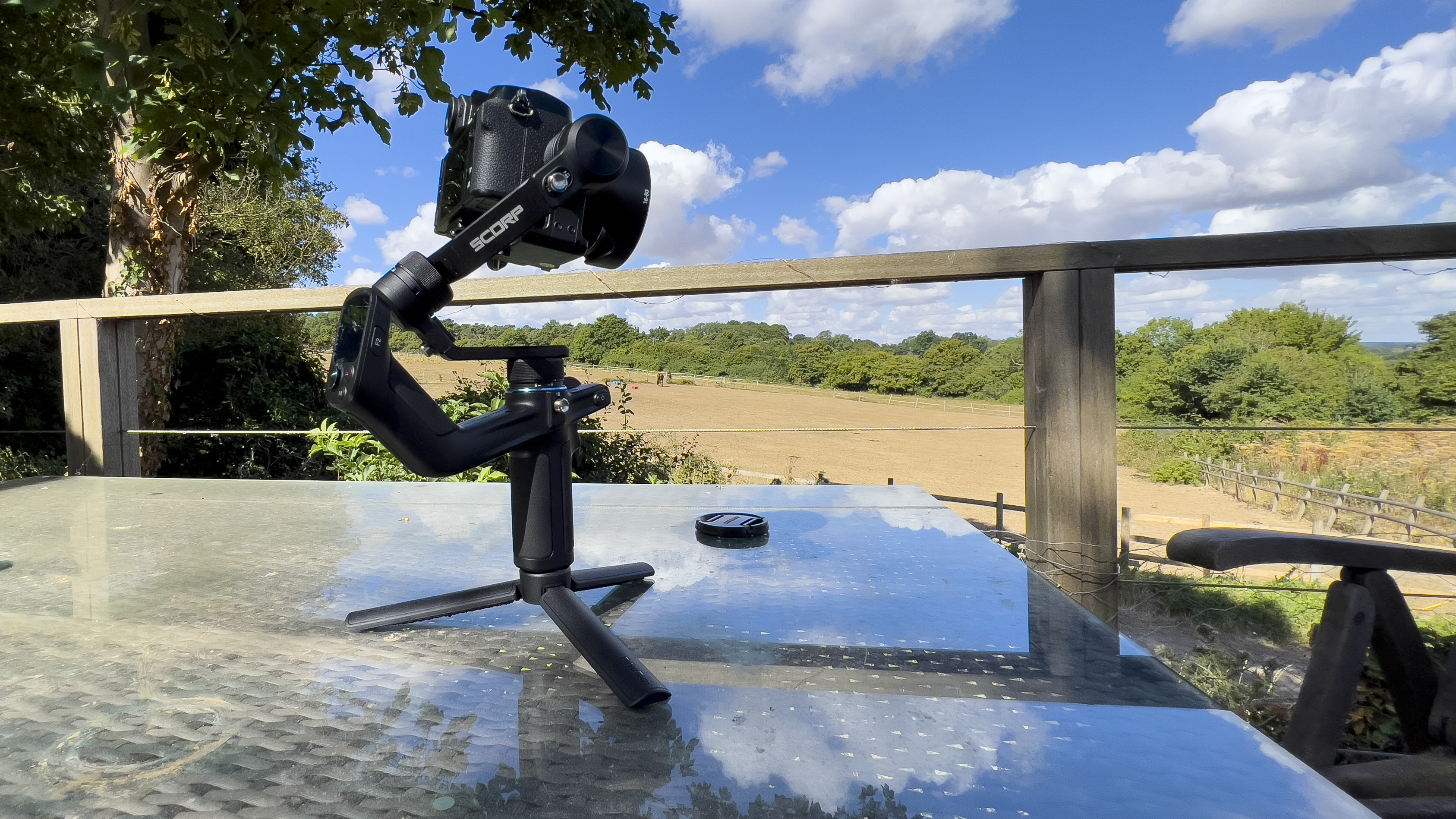
Specifications
Reasons to buy
Reasons to avoid
✅You want hybrid flexibility, since it supports mirrorless cameras, action cams and smartphones all in one rig.
✅You want intuitive controls, via a 1.3-inch OLED touchscreen plus physical knobs and buttons.
❌You want a swappable battery, but the SCORP Mini 3 Pro uses an integrated built-in battery (no hot swap).
❌You want better AI precision, since some reviewers say the default tracking can be jerky or requires tweaking.
I thoroughly enjoyed using the Scorp Mini 3 Pro, which made executing cinematic moves like pans, tilts, rolls, tracking shots, and crane lifts feel almost effortless with my iPhone Pro Max.
Its fluid, stabilised motion gave me the confidence to push beyond standard shots and get more creative on location, experimenting with angles and movements that elevated the look of the footage. My model, Maddy, also brought her own ideas for framing and motion, and the gimbal responded so smoothly that it felt like a true collaboration between us, the camera, and the stabiliser.
The Scorp Mini 3 Pro also proved its worth for more straightforward assignments. Shooting ‘talking head’ interviews was refreshingly flexible without the need to be locked into a bulky tripod. I could introduce just enough motion - slow pans or subtle tilts - to keep the visuals engaging while maintaining a professional polish.
Its integrated mini tripod adds another layer of versatility, especially when paired with the upgraded 4.0 AI tracker. With a 15% wider field of view and tracking up to 18 metres, it essentially doubles as a camera assistant, freeing you to move naturally on set—an invaluable tool for solo creators.
Setup was reassuringly quick, with no balancing headaches and zero shake across every test shoot. The OLED screen is bright and responsive, offering intuitive control through taps and swipes, while the dedicated physical buttons give you precise handling of roll, tilt, and pan when you want to fine-tune your framing. In practice, the gimbal floated my iPhone through every move with remarkable stability, delivering the kind of results that once required far bulkier, more expensive gear.
The Scorp Mini 3 Pro strikes a great balance between portability, ease of use, and pro-level performance, making it a compelling choice for both casual creators and serious mobile filmmakers looking to add cinematic polish to their work.
Read more: FeiyuTech Scorp Mini 3 Pro kit review
How to choose the best gimbals for DSLR and mirrorless
Gimbals come in different sizes, weights, and payload capacities. Every gimbal has to be 'balanced' for the camera and lens combination you're using so that its weight is centered over the axes of movement and the gimbal motors are not overloaded. Even with balancing, you need to make sure that your camera kit's weight is within the gimbal's payload capacity in order for it to carry out its full range of movement.
Gimbals use gyroscopic sensors and motorized pan, tilt, and roll axes. They offer different shooting modes for Pan Follow movements where the camera stays level, Follow modes where the camera can tilt up and down and POV modes where you can create deliberate roll effects too. Even as an amateur filmmaker, you'll instantly notice the difference in your footage when shooting with a gimbal.
Most mirrorless cameras now come with in-body stabilization systems (IBIS), but these systems can only compensate for camera wobbles in a limited way, and even with 'active' digital stabilization, they can't match the smoothness of a gimbal.
How we test gimbals
When it comes to accessories like gimbals, we do as much testing as possible in the field. We commission experienced reviewers who have used these products before and know exactly what to look for and where any weak points might be. For gimbals specifically, we look at stability, ease of setup, smoothness of operation and portability. We test how smoothly the camera moves, how securely it is held and whether there are any design niggles that prevent it from working as it should, like different parts knocking into each other when the camera is moved to certain positions.
Find out more about how we test and review on Digital Camera World
The best camera deals, reviews, product advice, and unmissable photography news, direct to your inbox!

Gareth is a photographer based in London, working as a freelance photographer and videographer for the past several years, having the privilege to shoot for some household names. With work focusing on fashion, portrait and lifestyle content creation, he has developed a range of skills covering everything from editorial shoots to social media videos. Outside of work, he has a personal passion for travel and nature photography, with a devotion to sustainability and environmental causes.
- Adam JuniperManaging Editor
- George Cairns
